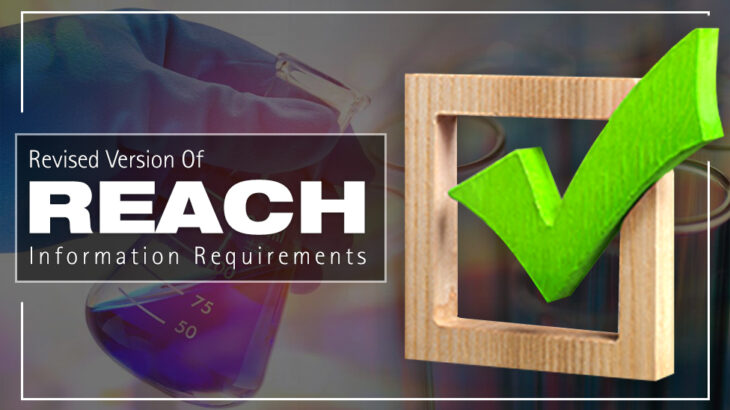Various factors lead to potential concern in the import and export of the chemicals and have been around for a longer time. The reasons for these concerns in the supply chain are due to consumer-shareholder demands, compliance regulations, policies, and liabilities. So, speaking about compliance, one of the most notable regulations that rules the entire supply process of the chemical industry is REACH compliance. Registration, Evaluation, Authorisation and Restriction of Chemicals (REACH) is European legislation imposed on the production and usage of chemical substances to reduce their considerable impact on human and environment.
The chemical substances in the material list of REACH compliance are substances of very high concern (SVHC) that can affect human life even after their disposal.
However, the European Commission has revised and made the relevant changes in the REACH information requirements for the well being of the environment and human life. Hence, in this post, let us see the revised version of REACH information requirements.
Basics On Registering With REACH Dossier:
As we all know, after the implementation of REACH compliance, every chemical company within the European Economic Area has to register under them. So, to register under the REACH, the entity undergoes steadious registration process and to make them REACH-Free.
Hence, the updated and revised version of REACH is an additional stress on the companies. These changes are expected to be implemented by the end of the year, and it is advisable for the companies to start their preparation for the changes. Thus, the companies should be familiar with the revised annexes and review their registered dossier.
The Major Changes In The Compliance:
Specific Rules And Requirements Needed To Be Adapted:
- Specifying in vitro and in vivo mutagenicity studies especially while researching on mutagenicity concerns.
- Specify reproductive toxicity studies, especially while studying administration routes and preferred animal species. It should also be mentioned while registering the triggering causes which lead to further studies.
- It should also be mentioned why aquatic toxicity studies should be performed for long-term instead of short-term and things related to it.
- The registration should also contain why toxicity studies on sediment and terrestrial organisms were performed for long-term studies instead of short-term. Similarly, the report should clarify why long-term testing was investigated on both the transformation and degradation products.
- Specifying on bioaccumulation and degradation studies, and reporting when further study is needed including the investigation on both the transformation and degradation products.
- The representatives are obliged to provide sufficient information on the representatives of non-EU manufacturers.
Information regarding substance identification:
- The company should submit a complete description on the composition, or nanoforms related to the information requirements under the Annex VII-X of REACH.
- The company should also provide information regarding the new requirements of the reporting crystal structure. In terms of composition, the company should come up with reports containing substances unknown or complex reaction products or of biological materials that are used to form the structure.
- The company should also provide clarified information on requirements in terms of additives, constituents, impurities and analytical information as well.
Hence, these are the major changes made by the European Commission in their recent revised REACH regulation. It is also expected that ECHA will come up with suitable advice to the related information. Sunstream will assist you in the revised version of REACH as well as for related regulations like conflict mineral compliance to streamline your operation in a better way.




 +1.585.935.7123
+1.585.935.7123 +91-804-148-6861
+91-804-148-6861